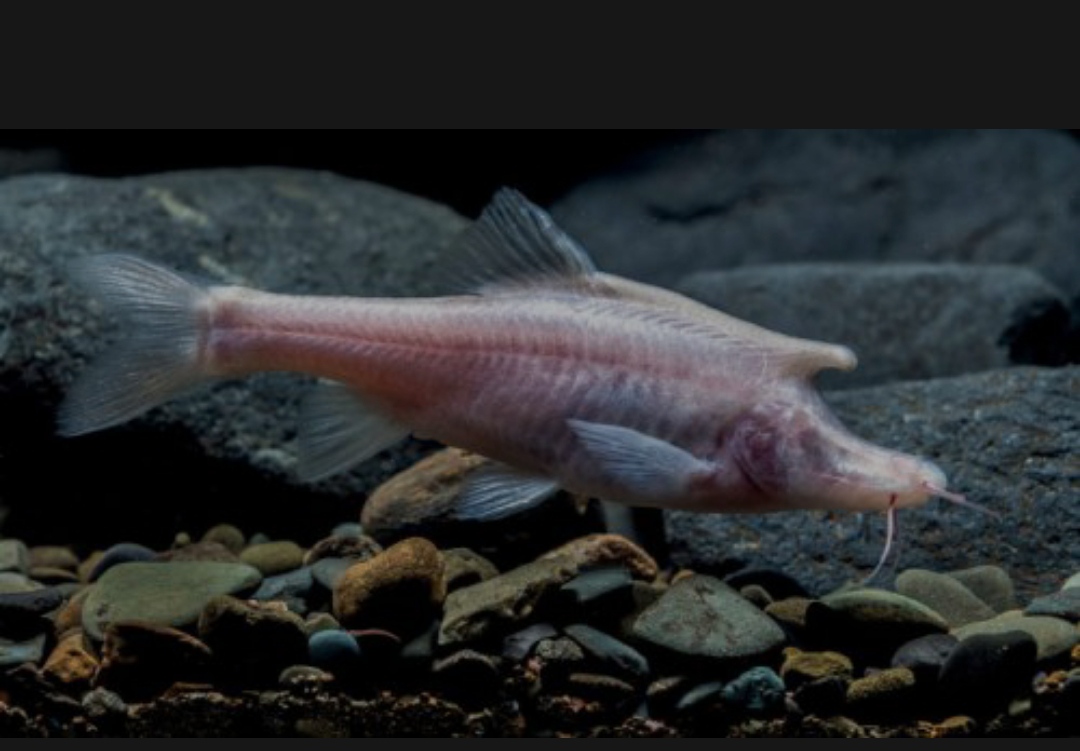
DISCOVERY: FISH WITH HORN DISCOVERED IN CHINA
New Fish Species Has Mysterious Horn-Like Structure on the Back of Its Head
Sinocyclocheilus longicornus inhabits a completely dark cave in southwestern Guizhou province in China.
Live adult male paratype of Sinocyclocheilus longicornus. Image credit: Xu et al., doi: 10.3897/zookeys.1141.91501.
Live adult male paratype of Sinocyclocheilus longicornus. Image credit: Xu et al., doi: 10.3897/zookeys.1141.91501.
Sinocyclocheilus is a genus of freshwater fish in the family Cyprinidae endemic to China.
First described in 1936, it comprises 76 valid species, of which 71 species are grouped into five species groups.
Almost members of the genus live in or around caves and most of these have adaptations typical of cavefish such as a lack of scales, lack of pigmentation and reduced eyes. Several species have a ‘horn’ on the back of their head, the function of which is unclear.
In contrast, species that live aboveground, as well as a few found underground, show no clear cavefish adaptations.
“The golden-line fish genus Sinocyclocheilus is endemic to China, and is mainly distributed in the karst areas of Southwest China, including Guangxi, Guizhou, Yunnan, and Hubei provinces,” said Dr. Jiang Zhou of Guizhou Normal University and colleagues.
“The narrow distribution, morphological similarities, and morphological adaptations to cave environments, such as the degeneration or loss of eyes and body scales, have made classification of the genus difficult and often controversial.”
“Species of Sinocyclocheilus have variably developed eyes and horn-like structures on the back of the head,” they added.
“Eye morphology includes normal, microphthalmic, and anophthalmic conditions.”
“Normal-eyed and microphthalmic species are distributed from eastern Guangxi through southern Guizhou to eastern Yunnan, and eyeless species are mainly distributed in the Hongshuihe river basin in northern Guangxi and the Nanpanjiang river basin in eastern Yunnan.”
“The horn-like structure is present mainly in species of the Sinocyclocheilus angularis and Sinocyclocheilus microphthalmus species groups.”
“These horned species are distributed in the Nanpanjiang, Beipanjiang, and Hongshuihe river basins of the upper Pearl River.”
The newly-described species, Sinocyclocheilus longicornus, is only known from the type locality, a vertical cave some distance from Hongguo town in the Chinese province of Guizhou at an elevation of 2,276 m.
“There was no light inside the cave,” the researchers said.
“Individuals of Sinocyclocheilus longicornus were located in a small pool about 25 m from the cave entrance.”
“The pool was about 1.8 m wide and 80 cm deep, with a water temperature of 16 degrees Celsius at collection time and a water pH of 7.4.”
Sinocyclocheilus longicornus has a scaleless, albinotic body without pigmentation, and small, degenerated eyes.
It also has a single, relatively long, unforked horn-like structure on the back of the head.
“Sinocyclocheilus longicornus clustered with eight species of the Sinocyclocheilus angularis species group on the phylogenetic tree and could be divided into Clade I and Clade II,” the scientists said.
“Long and short/indistinct horn-like structures are present in Clade I and Clade II, respectively.”
“Based on the present study and previous phylogenetic trees, we hypothesize that the evolution of the forehead horn may have occurred in at least two independent formations, one weakening event and one loss event.”
“As for the eye, no corresponding clade was found within the Sinocyclocheilus angularis species group, and variable eye phenotypes were also reported within Sinocyclocheilus bicornutus, which may be related to the reduction of eye size during evolution or to the abundance and deprivation of food resources during growth and development, as well as related gene mutations.”
The discovery of Sinocyclocheilus longicornus is reported in a paper in the journal ZooKeys.
C. Xu et al. 2023. Sinocyclocheilus longicornus (Cypriniformes, Cyprinidae), a new species of microphthalmic hypogean fish from Guizhou, Southwest China. ZooKeys 1141: 1-28; doi: 10.3897/zookeys.1141.91501
Source: Sci News
